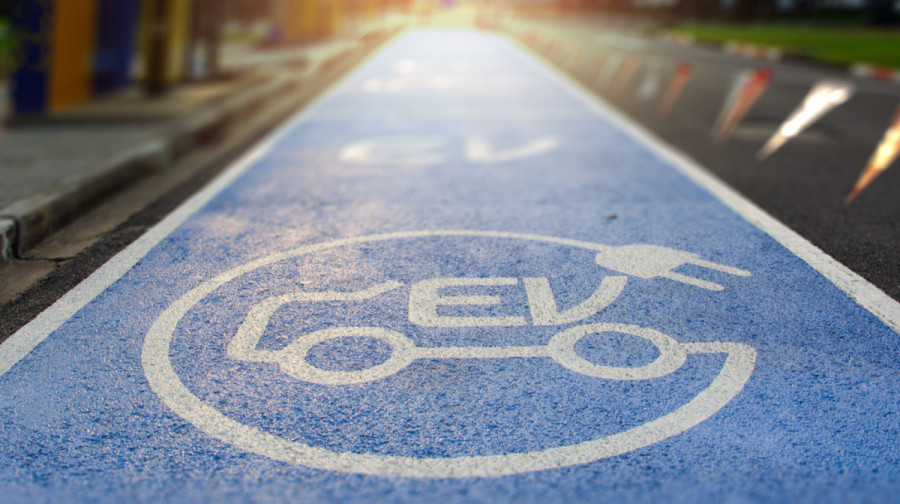Columns
Driving in reverse gear
Nepal's new tax policy is not in support of the adoption of electric vehicles. It is actually going against the global trend.
Paban Raj Pandey
As with everything else in life, decisions come in all shapes and sizes. Some are boilerplate, some far-reaching with major implications for generations to come. In ideal circumstances, those entrusted with the job of making decisions hopefully come through every single time. But as humans, we are all fallible. No matter how good the intentions, ill-advised decisions are made all the time. The Nepal government’s decision in late May to hike taxes on electric vehicles is one such. The 2020-21 budget raised customs duty on electric vehicles to 40 percent, introduced excise duty ranging from 30 to 80 percent and kept VAT unchanged at 13 percent. Previously, EVs only paid up to 10 percent customs and 13 percent VAT.
The policy has come under heavy criticism. The official line is that the tax rates along with electricity tariffs were revisited to raise the Rs11.62 billion the budget announced in subsidies to electricity consumers, as pointed out by Minister for Energy, Water Resources and Irrigation Barshaman Pun to Parliament on June 9. Electric vehicles have now been divided into six categories based on battery capacity, with the more powerful ones paying higher excise duty. However. the proposed 2020-21 federal budget is to the tune of Rs1,474 billion. Nepal’s is a Rs3,500 billion economy. In the grand scheme of things, Rs12 billion is a drop in the bucket, and could have been easily sourced from elsewhere.
Budget's regressive message
Prior budgets at least tried to encourage the use of EVs with favourable tax policy, even though the lack of charging stations remained a major roadblock. Here is the rub. Globally, the mass adoption of battery-powered vehicles is just a matter of time. The only question is if they take over in a decade or two, or three. Nepal’s in particular is a unique case in that in the 2018-19 fiscal year, it spent Rs216 billion on imports of petroleum products and another Rs121 billion on vehicle and spare parts. That is a lot of hard-earned dollars. Foreign exchange reserves are finite. In the first 10 months of fiscal 2019-20 through mid-May, they totalled $10.3 billion—enough to import 10.8 months of merchandise and services.
The math is simple. On the one hand, so much money is being spent on imports of petroleum products, on the other, domestic power generation is on the rise. Currently, Nepal has an installed capacity of 1,387 megawatts—essentially all of it hydro. Demand slightly exceeds this supply. An additional 1,300 megawatts is expected to come online in the fiscal year 2020-21. By then, power will be in surplus. The government is doing its bit to encourage more consumption. In the latest budget, customs duty on electric stoves used by households has been reduced to 5 percent from 15 percent. Electricity consumption per person is expected to rise to 350kWh in the fiscal year 2020-21, up from the current 260kWh.
In fact, Nepal’s installed capacity can go significantly higher. The KP Oli government, which came to power in February 2018, planned to develop 15,000 megawatts within a decade. If the installed capacity gets even remotely close, a major overhaul of government policy is needed. Exports are one possibility. But even here, Nepal’s ‘yam between two boulders’ geography can be a handicap. A radical change in domestic consumption patterns hence will go a long way. Such transformation does not happen overnight, it rather requires a lot of planning and nurturing. This is where leadership and vision come in. There is a thing or two to learn from the likes of BP, ExxonMobil, Shell and Total—all major oil companies—that are making investments in renewable energy.
Austrian-born political economist Joseph Schumpeter’s creative destruction is apropos here. History is littered with products that went the way of the dinosaur. Think of the typewriter. In the 1960s, mainframes came into being. Soon followed mini-computers, and then the personal computer in the 1970s. Now, personal computers and smartphones mimic each other’s features, with the latter even replacing devices such as hand-held cameras. Those that did not see the writing on the wall were probably still investing in the buggy whip in the early 20th century. However, in 1905 in the United States, 2.5 percent of the vehicles on the roads were cars, the rest were horses and carriages; by 1925, 95 percent were cars. The adoption curve of new technology can be very steep. Industries can get disrupted very fast.
How solar energy evolved in the last two decades serves as a good example. At the end of 2019, as per the International Energy Agency, 629 gigawatts of solar was installed globally—enough to cover about 3 percent of global electricity demand. Twenty years ago, in 1999, there were only 807 megawatts of solar capacity. The massive drop in the average cost of solar cells, which went from $77/watt in 1977 to $0.10-$0.15/watt helped. Plus, solar panels are more productive now, with those commonly used in homes having an efficiency of between 13 and 22 percent. Accordingly, in many places, the cost of solar is lower than the cost of grid power for retail. In many places, utility-scale solar goes head-to-head with the wholesale cost of electricity from other sources.
Adoption set to accelerate
The International Energy Agency says that, at the end of 2019, there were 7.2 million electric cars. This only made up about 1 percent of global car stock, but 2019 sales were up 40 percent year-over-year to 2.1 million. Nearly all automakers are now sensing the potentially explosive growth ahead. Battery costs, one of the crucial factors affecting electric vehicle adoption, are rapidly declining. In 2010, EV battery packs cost north of $1,100/kWh, versus around $150/kWh now. It is widely believed that once the price gets to $100/kWh, which is expected to happen in a few years, EVs will at least reach cost parity with conventional petrol/diesel engines. That is when adoption can take the form of a hockey stick. This is precisely what South African-born American entrepreneur Elon Musk is eyeing with his gigawatt factories.
Several countries already plan to ban sales of vehicles that run on fossil fuels—Norway by 2025, India and Germany by 2030, and France and the United Kingdom by 2040. In Nepal, the signs were encouraging—until the latest budget, that is. If the overall goal is to minimise the import of fossil fuels, then it would make sense to tax petrol/diesel vehicles more. Under the 2020-21 budget, they will pay 80 percent customs and 60 percent to 100 percent excise, plus VAT. In fact, some high-end vehicles pay up to 298 percent overall. Turns out this is still not prohibitively high, so raising taxes by a few percentage points more in order to help EV adoption would probably be the right approach. Instead, electric vehicles got the short end of the stick. Policymakers are missing the forest for the trees.
***
What do you think?
Dear reader, we’d like to hear from you. We regularly publish letters to the editor on contemporary issues or direct responses to something the Post has recently published. Please send your letters to [email protected] with "Letter to the Editor" in the subject line. Please include your name, location, and a contact address so one of our editors can reach out to you.




 20.12°C Kathmandu
20.12°C Kathmandu















